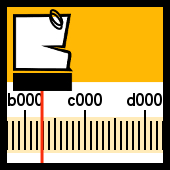DIALOGUES ABOUT SALARY
Dialogues about salary
Just imagine that You have a staff of preachers and You pay for their work. What do You suppose will be the formula for their salary? The task is not simple, but in no way whatsoever is any religious organization completely solved.
Of course, You are not sustaining a staff of preachers. You have secretaries, agents, waiters, vendors, etc., but the "salary" problem of Your company does not get simpler. In fact, it gets even more complex.
However, to your amazement, a lot of "salary" situations help to reveal the analogy with the material stimulation of preachers. Alevtina Kavtreva and Ksenia Tkalich are having a discussion about the matter.
PART 1
"UNITS"
K.T. After examining the question asked at trainings, as well as in the Forum, you unconsciously note how often the salary (or bonus) of some employees are tried to be linked with the "end result", moreover often, what is understood by "end result" is simply turnover or profit. What is wrong with that?
A.K. What is wrong is that, the efforts of the employee do not "fit" with the end amount of money…
K.T. Let’s see an example which was once given in the Forum.
EXAMPLE 1
"A dispatcher of a real estate company takes phone calls and distributes the Clients. And if he is paid a percentage of the income of the company during deals (i.e. its turnover), then the amount received as percentage of the sales of an elite house will greatly exceed the amount received for the sales of a cheaper one. Let’s say, 0,5 % from 6 thousand dollars (commissions of the company) – that is 30 dollars, and 0,5% from 600 dollars – that is 3 dollars. The difference is of ten times. If we made different percentages (for a small Client more, and for a large one less), then we get a strange ideology: The bigger the Client, the less percentage we pay "for him".
Thus arises the following problem: pay in such a way that the employee becomes interested in making any deal happen.
A.K. Why should he be even paid a percentage?
K.T. The customer reasoned in the following way: if he is not paid from the deal, the dispatcher will work "carelessly" and envy the agents who receive from the turnover/profit.
A.K. Yes, but the dispatcher DOES NOT affect the value of a deal at all. His task is: to render good services to all Clients and not let any contact slip away. It is NOT required to artificially tie his work with the value. Though money is an "understandable" and relatively easy parameter to measure; in this case, it does not show the efforts of the employee.
K.T. And what shows his effort?
A.K. The number of deals. Making an abstraction on the sum of deals, the dispatcher should be paid a fixed amount for any deal.
K.T. It is somewhat difficult to disengage from money.
A.K. Though inertia always forces us to have a clear dependence between the cash end result and the work of the employee.
And such a dependence:
а) does not always exist;
b) the money measurement of the end result does not correlate with the effort of the employee since other factors often affect the cash result more.
K.T. How can we get rid of though inertia?
A.K. For example, with the help of the following heuristic procedure: you should forget that services/goods actually cost something. Just imagine that You have a staff of preachers and You pay for their work.
K.T. That is, when the efforts of the employee are not "tied" to money, should You give a "non-monetary" criteria to evaluate a work?
A.K. That is what we did by choosing in our example with the dispatcher, the efficiency on "the number of deals" as a criteria.
PART 2
"UNITS" and "CATEGORIES"
K.T. The example with the dispatcher was simple. But let’s see some more. Let’s consider a more difficult situation, which I also took from the Forum.
EXAMPLE 2
How to set a remuneration system for specialists attracting Clients to a bank, more effectively? We are dealing with a computation-cashier service. I.e. money is "present" in the task again. Though the attracted Client doesn’t give his money (remainder on the account) to the bank but allows it to be used.
A.K. Of course, how the bank worked with the remainder – it is the virtue of other sections… Anyway, 'let’s forget" about the money and let’s set another evaluation criteria …
K.T. Earlier with the dispatcher, it was comprehensible. He should actually not be caring which Client to call. His job is to serve each of them correctly. But in the case of the specialist attracting Clients for the bank, paying per unit is not correct: there are all kinds of Clients.
A.K. You mean that, attracting a large factory or a small barber shop – is not the same thing? Some specialists and the director of the company cannot be put through, even by phone?
K.T. Exactly. I want to know, how to consider the "significance" of the Client. And in doing so, I do not know what is to be understood by "significance"?
A.K. Let’s see. It is not correct to judge the "significance" using the remainder on the account and the turnover. The Client might be "trying" how work would be with that bank. It can happen that the cooperation will not start during the "season". A known inertia might be disturbing etc.
K.T. The size of the enterprise should not be considered then?
A.K. As Mendeleev D. joked, "the roar of a motor does not reflect its power". And a large factory can end up being bankrupt. The "Size" of the Client, will not tell us anything about the Client either.
Let us not stray and let’s return to our "salary" problem. We cannot entrust the manager who attracts Clients with the burden of defining the "significance" of the Client. That is why, the "type" of the Client is defined by the task given to the specialist.Thus, if the Clients are categorized by their fields of activities (supermarkets, counter shops, kiosks, insurance companies, barber shops) then we can use the corresponding category.
Let’s suppose the specialist of the 1st category works with barber shops and kiosks, and the specialist of 2nd category works with factories. The risk level for losing a "worthy" Client or creating a bad reputation for the company is higher for the agents of the 2nd category.
K.T. It means that the requirements from these specialists should be higher…
A.K. And according to these requirements, the size of the basic part (permanent salary part, from which the premium part of the salary is calculated) for each category of specialists shall differ. Of course that of specialists of the 2nd category is higher.
K.T. We separated the specialists according to "risk level of losing a Client". And can there be other principles of separation for different situations?
A.K. For example, if we have different service technologies (standard - special). Then we would have separated the managers into those who work with "standard" Clients on technology processing and those who work with the so-called VIP Clients on non-standard proposals. Everything which is "standard" shall require less time and qualification. That is why when the specialists work on different technologies, even the planned number of Clients/deals can differ.
K.T. Then it is once again right to calculate the "units" within each category.
A.K. Only note that in comparison to the case with the dispatcher of the estate agency, we paid a supplement premium for each deal, in the case with the bank specialists, we give a "unit" plan and calculate his efficiency for the number of deals. Because, looking for Clients is his main job.
PART 3
"UNITS", "CATEGORIES" и "MARKS"
K.T. Very well, let’s continue this discussion but now within one "category" ("technology", "level of risk" etc.). It is easier to sell what is "less expensive" than what is "more expensive", finding a "large" Client is more difficult than a "standard" one; preparing a lot of the same products is less time-consuming than preparing each one separately. Again w come to the conclusion that calculating "units" is not completely correct. WE need to consider the complexity of the work.
A.K. If we are talking about sales (cheap and expensive products), then the criteria of efficiency for "turnover" (together with the criteria of "number of sales") still apply. Depending on the situation, "efficiency for the number of sales" and "efficiency on turnover" can have equal values or have different weights.
In "The article about salaries" we have an example where
The general efficiency = 80% * efficiency on the number of sales + 20% * efficiency on turnover.
K.T. That is, the indicator with the highest weight is the one which the salesperson affects the most with his efforts. And if we are not talking about sales and there is no "turnover" (or it has nothing to do with the deal), for example, when something is produced but is not for sale…
A.K.Then we multiply the produced "units" by their "mathematical weight" and in such a way, we calculate the "units" together with the complexity of the work.,/p.
K.T.Let’s consider some example, that was asked at a seminar:
EXAMPLE 3
- Let’s suppose that in a certain small restaurant, an employee makes a specific number of salads per unit time. We suppose that he spends only 2 minutes on each salad when preparing for tourist groups (70-90 people), and 10 minutes for the same salad, but for an "individual" Client.
Let’s consider two "extremes". If his shift is consists of "groups", then if he works non-stop, he manages to fill 3 group orders, that is 240 portions. And if his shift consists of "unit" orders, he will only prepare 48 salads for 48 Clients. And this is all because it is easier to work in "bulk". If we calculate per "unit" (by setting a plan or paying per work done), we will undeservedly reduce his salary.
A.K. In other words, the number of orders also has its "weight" ("significance") of an evaluation. The more the unit orders, the less, objectively, the number of salads.
K.T. Yes, but what should this "weight" be? We cannot "equate" a salad with an order. How many prepared salads should be "considered" as an order?
A.K. That is, we should represent one through the other, and in order to do that, we need to find a general unit of measurement. Actually, humanity has already solved this problem with the invention of money.
K.T. Very well. Let’s find, represent and "reinvent" money…
A.K. Ok. You correctly considered two existing extremes in your reasoning. If we consider that these conditions are equal in effort and time-consumption, then we can "equate them". Then the time required to prepare 240 salads for 3 "group" orders is equal to the time required to prepare 48 salads for 48 "unit" orders.
Then let the "weight" (meaning the "significance of the evaluation") of the salad be x and the "weight" of the order be y.
240х + 3у = 48х + 48у
Now, let’s "reinvent" money. Let our general "money unit" be 1 point. We give x a value of - 1 point.
K.T. Why 1 point, and not 2? Where does it come from?
A.K. We are actually using it for simplicity. Why 1 and where did it come from – Let me try to explain through an example. Which unit was the least expensive before?
K.T. Well, let’s say, for example, a box of matches.A.K. Let’s suppose that it was considered as 1 cents and all the following units were expressed in other figures - compared to it. Why in cents? That is just how we named it. We could have used "tugrik", "centime", "euro-cent" or "kaif" etc. It is not important.
K.T. Ok...
A.K. What we get is:
240 points + 3y = 48 points + 48y
(240 - 48) points = (48 -3)y
192 points = 45y
y = the "weight" of the order = 192 points / 45 = 4,2667 points ~ 4,27 points
Let’s insert the POINTS in the equation:
240 points + 3 * 4,27 points = 253 points
48 points + 48 * 4,27 points = 253 points
Hence, normally, the employee should get 253 points when fully loaded, independent of the fact whether he works with large orders or unit ones.
K.T. That is, 253 points – is the standard. Now, if we wish to check whether our employee has toiled “
"hard” or "so-so", we multiply his results by the points (marks). For example, if, for a shift, he prepared 100 salads for 20 orders, then it means…
100 (salads) points + 20 (orders) * 4,27 points = 185,4 points
A.K. Which implies that his efficiency was only of 73% ((185,4 points / 253 points) * 100%). Or he worked "so-so", or he was "idle" (the visitors did not order any salad at the restaurant). And in this case we will require not only "salary" solutions but maybe even "marketing- culinary" and others.
PART 4
"UNITS", "CATEGORY", "MARKS" и "WAYS"
K.T. Very, well, "the equation about salads" has got a solution. But can a mark system be used for any situation? Let me explain my point in an example which I heard at a training.
EXAMPLE 4
Agents sell journal adware. The journal comes out once every month. Different Client groups have different ad budgets. Some work with branches which have a high advertising potential and others with branches which have low advertising potential. The size of the area bought is therefore, not at all related to the intensiveness of the order received (or very weakly related).
A.K. This example is externally similar to the example 3. It would seem that even here, there are two components: the "number of Clients" and "sold adware" (similar to "orders" and "salads").
"The layout for extreme values" will approximately look like this:

K.T. And according to me, it is not possible to find an adequate (regarding "salary")
solution to this equation, in this case:
30х + 150у = 10х + 10у
(30-10) х= (10-150) у
20 х= - 140у
х= - 70 у
A.K. Correct. Let’s be formal: what is the “difficulty”?
K.T. The difficulty is that the intensiveness of the work of both agents is the same. If the technology of sales of agent 2 differed from that of agent 1, then we would have solved this problem. Let’s set margins to the situation: Ready-made models are sent to the edition from the Clients in the given standard. If the agents were different, for example, one would have made the deal possible and the second would have consulted the Client, "promoting" design etc., we would have formalized it or we would have distributed the functions between two people.
If the agents do the exact same thing and with the same quality, but their results still differ, then it is clear that the matter is not about "intensiveness" or "technology".
A.K. It is all a matter of marketing. People work in different segments where the demands are different. Let’s complicate the problem: We forbid overpayment for "pushing unmarketable". Since if we pay, then it is an investment error: "The less the potential – the more the subvention".
K.T. And what if these are temporary unmarketable? For example, new branches with a bright future?
A.K. This is also a marketing task – forecasting the rating of different "segments", separate "newborns" from "old" ones and "young" ones and set different game rules. If you will test a specific new branch, then for the period of test, the plan for efficiency can be lower (or You only control the fulfilment of technological sales). Nevertheless, the experiment should always have a time limit, or else there is a chance that it could go on forever.
K.T. If we return to the technology of service to Clients of different types, then we need to explain that the "cheap and rare" Clients (if You decided to work with them) should not be serviced the same way as the "expensive and/or frequent" Clients.
A.K. Of course. And by the way, the creation (sometimes even invention) of another method of service the rearing of employees for "different methods of sales" (read about the "different technologies of work") consists of more know-how than any combination of special formula for salary including with points or without them…
K.T. It means that even in our example about the restaurant, we could have moved away from "marking"… if we would have had a separate "salad cutter", who would have cut in big volumes, they would have been kept in waiting, and when an order is made, the only things left to do would be to "weigh", to "lay" and to "decorate". The difference of speed for serving groups and a single Client would have then been reduced. When salads are prepared in bulk, much less time goes into the preparation operations.
A.K. Perfectly correct. And if we would in addition to the last solution prepare small amounts of salad "in storage" (for "unit" Clients as a matter of fact), then the difference in speed would have disappeared completely.
K.T. It is not always advantageous. And it is very important that the quality does not suffer…
A.K. And when, due to certain circumstances, we cannot rationally and fully organize the work, we are bound to use our "marking system". With its help, we block the holes in technology. That is the "small salary"… But as soon as the technology allows it, we can move away from this marking system.
K.T. Coming back to advertising agents, it happens that our problem can be solved in "two steps":
- First we need to create new methods of sales for agent 2 (in the table). And maybe this method will not be "an agent" one…
- Then set the same plan for adware and for the number of Clients within each method.
A.K.Absolutely correct. We shall talk about how to invent new ways of sales and about other models of salaries another time.
The authors are thankful to the following people for their help in this article
Sychev S. and Vladimirova G., "TRIZ-CHANCE" Systems.















